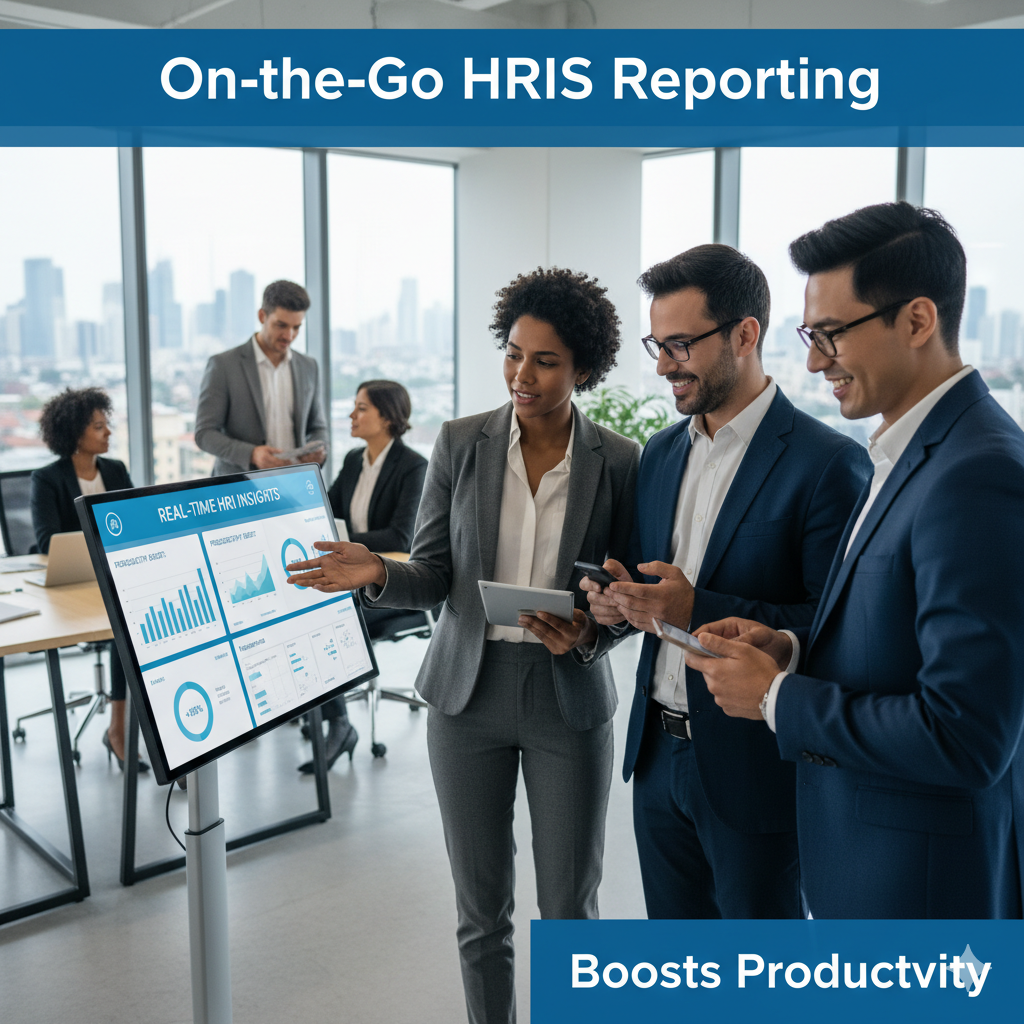Address
Kaypian, San Jose Del Monte City, Bulacan Philippines
Work Hours
Monday to Friday: 8AM - 6PM
Weekend: 10AM - 5PM
Address
Kaypian, San Jose Del Monte City, Bulacan Philippines
Work Hours
Monday to Friday: 8AM - 6PM
Weekend: 10AM - 5PM


Integrated HR. Accurate Payroll.


Integrated HR. Accurate Payroll.

In today’s fast-moving workplace, data-driven decision-making has become essential for every HR professional. Gone are the days when HR teams relied on static reports or had to wait days for updated employee data.
With real-time HRIS (Human Resource Information System) reporting, HR managers and executives can now access vital insights on the go — directly from their smartphones, tablets, or laptops. This mobility transforms how HR departments operate, enabling faster decisions, improved productivity, and a more agile workforce.
On-the-go HRIS reporting refers to the ability to view, generate, and share HR reports in real-time from any device, anywhere.
An HRIS (Human Resource Information System) centralizes all employee data — from payroll and performance metrics to attendance and recruitment — and makes it accessible through a secure, cloud-based system.
When equipped with mobile access, HRIS platforms allow HR professionals to:
Simply put, it’s HR intelligence without the desk.
Traditional HR reporting often leads to delays and outdated data. But real-time insights bridge that gap by offering accurate, live data on workforce performance and operations.
Here’s why it matters:
With mobile HRIS dashboards, HR leaders no longer need to wait until they’re in the office. Whether attending an off-site meeting or working remotely, they can approve requests, view analytics, and make quick, informed decisions.
HR professionals can handle time-off approvals, payroll reviews, and compliance tracking directly from their mobile devices — cutting down repetitive administrative tasks.
On-the-go reporting promotes seamless communication between departments. HR managers can share reports instantly with finance, operations, or leadership teams, improving alignment across the organization.
Mobile HR tools give employees direct access to view payslips, update details, or submit requests — freeing up HR teams for strategic initiatives.
By having access to real-time KPIs (Key Performance Indicators), HR leaders can spot trends early — like rising absenteeism or turnover — and act before they escalate.
Modern HRIS solutions leverage cloud-based infrastructure, ensuring secure and scalable access to HR data.
Benefits of cloud-powered HRIS systems include:
Cloud technology is the foundation that makes on-the-go HRIS reporting possible — ensuring speed, reliability, and compliance across global teams.
While mobility offers freedom, data security remains a top concern.
Leading HRIS solutions include:
Consider an HR manager overseeing multiple regional offices.
Without on-the-go access, approving leave requests, checking attendance, or reviewing performance data would take hours — if not days.
With mobile HRIS reporting:
Result? Time savings, better decisions, and a more productive HR department.
The next generation of HRIS tools will be AI-driven, predictive, and fully mobile. Expect systems that automatically:
The future of HR isn’t just digital — it’s mobile, intelligent, and always connected.
If your HR team still relies on static reports, it’s time to embrace the power of mobility — because in today’s workplace, HR success travels with you.